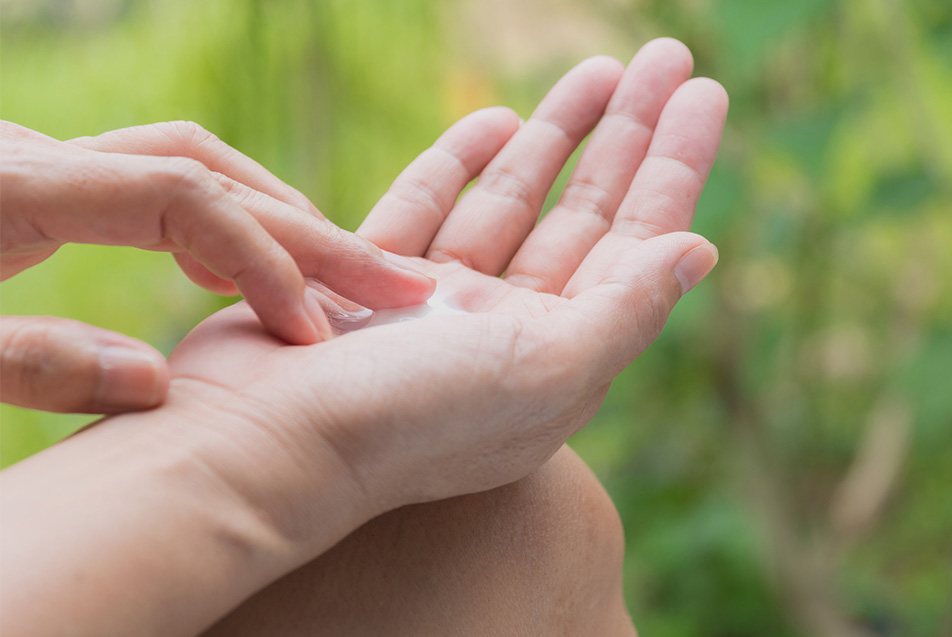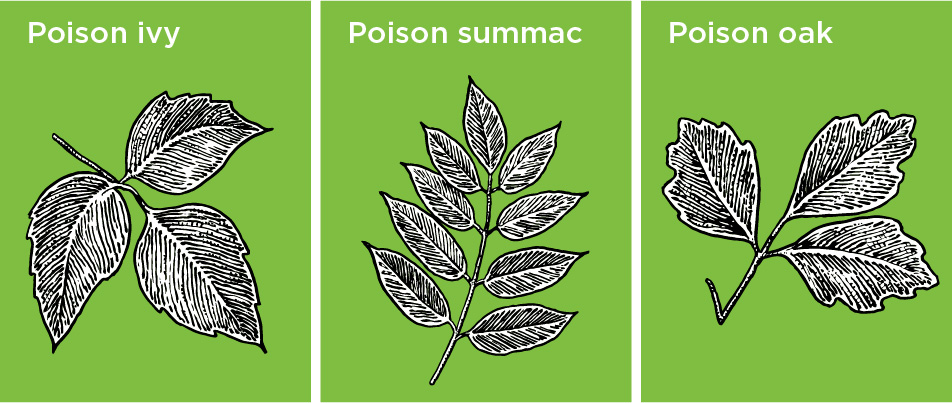
This post was written by Brian Wenger, 2020 PharmD candidate, with input from Kris Howard, PharmD and Brandon Euen, PharmD.
The warmer seasons in the Midwest, typically mean a welcome shift outdoors. People relish the opportunity to enjoy hiking, biking, and many other activities that connect them to nature. With this, however, comes a higher risk of running into some of our area’s troublesome greenery, including poison ivy and poison oak. The itching may last for weeks and rashes can cause a great deal of discomfort. Thankfully, there are both prescription and non-prescription products that can be used to prevent and/or treat poison ivy.
Control the symptoms
Let’s say that you’re taking a bike ride on the Rivergreenway, and you accidentally brush up against a strange-looking plant on the side of the path. If the plant looked similar to these photos, you should take the proper steps to prevent rashes/itching from developing.

How to prevent poison ivy from spreading
- Act quickly! As soon as possible, remove all contaminated clothing and wash the skin with warm water and mild soap (including fingernails). Studies have shown that washing within 2 hours can reduce the likelihood/severity of the rash, but aim for 30 minutes!
- Barrier creams such as Tecnu® claim to help prevent the rash from forming, however, they have not proven to be more effective than simple dish soap.
- Avoid scrubbing too hard or scrubbing after a rash appears, as it can actually worsen the problem.
- Wash all items that came into contact with the plant in warm, soapy water before reuse.
Treating the symptoms
Let’s say you aren’t able to wash yourself until hours later, and when you got home you see a rash developing. What is your next step?
How to treat poison ivy
- First, try over-the-counter (OTC) products to treat your symptoms. Keep in mind, that the rash will most likely go away on its own.
- Calamine lotion
- Contains phenol and zinc oxide to help protect skin from irritation
- Use 3-4 times daily as needed
- Shake well before use and do not use near eyes or on open wounds
- If you need to use it for more than 7 days, call your doctor!
- Oatmeal baths
- Soothes itching and burning
- Look for products such as Aveeno® Soothing Bath Treatment
- Pour oatmeal into bathtub full of water and mix until milky; soak for 15-30 minutes as needed throughout the day
- Domeboro®
- Contains aluminum sulfate and calcium acetate to help tighten skin and relieve irritation
- Soak for 15-30 minutes up to three times daily
- Avoid contact with eyes and call your doctor if you don’t improve in 7 days
- Zanfel® Poison Ivy Wash
- Shown to be effective in treating symptoms but not to prevent rash from occurring
- Works by binding rash-causing chemical and removing it from skin
- Available at most pharmacies and online, but more expensive than other treatments
- One treatment is all that is needed in most people (may need another after 24 hours)
- Avoid the use of antihistamines such as Benadryl® to relieve itching.
- Poison ivy itching is not caused by histamine, which is what Benadryl® works on
- Use only if you are having trouble sleeping due to itching
- OTC steroid creams like hydrocortisone are minimally effective in poison ivy rash.
- Higher potency creams such as clobetasol are only available with a prescription from your doctor, but are shown to be more effective
- Oral steroids such as prednisone are a very effective option if your poison ivy is severe and involves the genitals or face.
- They should be taken for 2-3 weeks and require a prescription
- Significant adverse effects: increased blood sugar, sleep disturbances, increased infection risk, ulcers, high blood pressure
Enjoy your time outside, but remember “leaves of three, let it be”. Wear protective clothing and wash your skin as soon as possible after suspected exposure.
If you do end up getting a rash from poison ivy, do not worry! There are a lot of safe, effective, and fairly inexpensive options to relieve your symptoms, and many are available without a prescription. If your rash is widespread, affects your mouth or genitals, is blistering, is not improving, or is swollen, call your doctor.